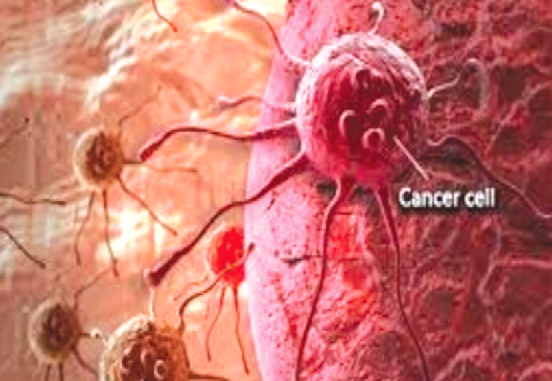
Funding childhood cancers under NHIS commendable
It is gratifying to recall that the Chief Executive Officer (CEO) of the National Health Insurance Authority (NHIA), Dr. Lydia Dsane-Selby, disclosed recently that the NHIA was considering the coverage of childhood cancers under the National Health Insurance Scheme (NHIS).
She assured the public that the NHIS could accommodate the treatment of childhood cancers without much strain.
Advertisement
Cancer is a disease caused by uncontrolled division of abnormal cells or a malignant growth in any part of the body. Childhood cancers are cancers that affect children between birth and 14 years.
Globally, cancer is a major cause of death among children, with about 300,000 new childhood cancer cases diagnosed annually.
Disproportionate death rates
There is a disproportionate death rates (up to 80 per cent) occurring in children with cancer living in low-and middle-income countries (LMICs) where majority of childhood cancer cases occur compared with only 20 per cent deaths in high-income countries (HICs).
This is because in HICs, population-wide, awareness and expertise to detect and diagnose these cancers are available and there are well-resourced treatment centres with the requisite expertise and very importantly, the child receives treatment regardless of the ability of parents to afford treatment or not.
The situation in most LMICs is almost the reverse of what happens in HICs, where diagnosis is often late, there is limited number of specialist doctors and nurses in cancer care, and access to treatment is completely dependent on patient relatives’ ability to pay for it.
The Director-General of the World Health Organisation (WHO), Dr. Tedros Adhanom Ghebreyesus, emphasised, “Too many children have their lives cut short by cancer, and survival rates in poor countries are scandalously lower than those in wealthy countries.”
Since September 2018, the WHO has been aiming at achieving a 60 per cent survival rate by 2030 for children suffering from cancer in accordance with the Sustainable Development Goal Three.
Accordingly, the agenda is to increase prioritisation of childhood cancers through awareness raising at global and national levels and best practices in childhood cancer care.
Childhood Cancers in Ghana
The most common childhood cancers in Ghana are those enumerated below.
1. Acute lymphoblastic leukemia (ALL): Cancer of the blood and it originates from the bone marrow.
2. Lymphomas: Usually very fast-growing type of cancers, which affect the body’s disease fighting system directly.
3. Retinoblastoma: This cancer begins from the sensitive lining of the back of the eye which is essential for sight and can grow to fill the eye and grow backwards to affect the brain.
This type of cancer can affect both eyes in a quarter of cases and can present very early in life. Retinoblastoma is rare after six years of age.
4. Wilms tumour (also called nephroblastoma): It is a childhood cancer that arises from the kidneys. It is the most common type of kidney cancer in children.
About nine of 10 kidney cancers in children are Wilms tumours. It thus makes kidney cells grow out of control.
Fighting Childhood Cancers
The sustainable fight against childhood cancers calls for a comprehensive healthcare package including early detection with accurate diagnosis, appropriate treatment and supportive care.
Fortunately, all the four commonest childhood cancers in Ghana are highly curable, subject to early detection and financing of the treatment and the supportive care.
As such, funding childhood cancer treatment under the NHIS should thus focus on all the aspects of cancer treatment including supportive care.
For example, it takes about GH¢40,000.00 to provide comprehensive treatment for a child suffering from Acute lymphoblastic leukemia and the treatment regime lasts for about three years. Other cancers like lymphomas require about six months for cure and they may cost less.
A sustained fight against childhood cancers also requires that government trains more paediatric oncologists (childhood cancer specialists) and oncology nurses.
Oncologists
My checks revealed alarmingly that there are not more than four fully trained paediatric oncologists in Ghana.
This number is woefully inadequate. Fortunately, the Ghana College of Physicians and Surgeons (GCPS) has since 2018 started a Paediatric Oncology Fellowship programme and it is the first of its kind in West Africa.
Averagely, it takes about three years to train a paediatric oncologist. The first and only product of this programme is currently saving lives in the country.
Currently, the programme has 10 continuing students made up of seven Ghanaians, a Nigerian, a Liberian and a Sierra Leonean.
It is mandatory for these fellowship students (Resident Paediatric Oncologists) to acquire additional knowledge from well-resourced paediatric oncology centres abroad.
Logically, therefore, there is the need to train more Paediatric Oncologists if childhood cancer treatment is covered under the NHIS to forestall the specialists becoming overwhelmed following early detection and surge in number of patients.
I must, however, commend the government and for that matter, the NHIA for that laudable decision to fund childhood cancer treatment under the NHIS. This is a giant, timely and strategic step in the fight against childhood cancers.
Early Warning Signs
Notable among the early warning signs of childhood cancers are white spot in the eye, new onset of squint in the eye (deviation of one eye away from the point of focus), persistent redness of the eye, bulging of the eyeball and lumps/masses or swellings on the body.
The rest are unexplained fever that fails first-line treatment, bleeding, recurrent severe anaemia requiring blood transfusion, joint or bone pains, headaches, vomiting upon waking up, loss of vision, abnormal change in walking, convulsions and regression in the development of the child.
The general public is also advised to always remember that a successful fight against childhood cancers starts with early detection of the disease and about 80 per cent of childhood cancer patients are cured with early diagnosis of the disease.
Parents must, therefore, remember the early warning signs listed and seek appropriate care promptly.
The writer is a Health Service Administrator
Email: [email protected]



